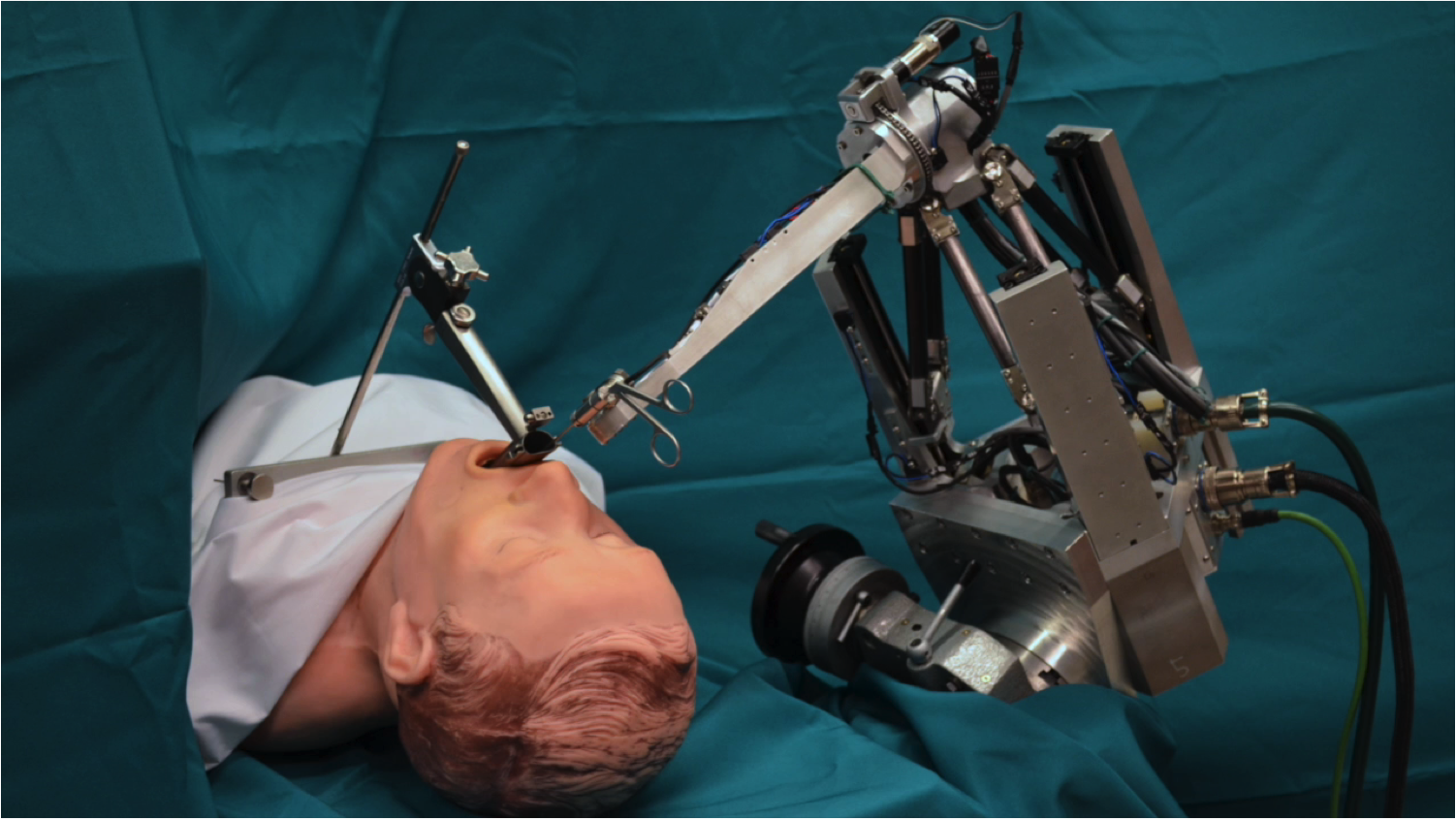Contact Us
CiiS Lab
Johns Hopkins University
112 Hackerman Hall
3400 N. Charles Street
Baltimore, MD 21218
Directions
Lab Director
Russell Taylor
127 Hackerman Hall
rht@jhu.edu
There has recently been a significant movement in head and neck surgery toward minimally invasive techniques, particularly those utilizing natural orifices. However, while these techniques can reduce the risk of complications encountered with classic open approaches such as scarring, infection, and damage to healthy tissue in order to access the surgical site, there remain significant challenges, including small scale anatomy, hand tremor, reduced precision from long instruments, and difficulty navigating instruments through delicate, highly constraining anatomy. Robotic systems have been proposed to overcome these challenges, but they have generally either been single purpose systems, or systems not intended for head and neck microsurgery e.g. the DaVinci. Currently, there is no system designed for general purpose head and neck microsurgery. This project seeks to meet this need with an easy to use, relatively low cost, cooperatively controlled surgical robotic system.
The main goal of this project is build and validate a robotic system for general purpose head and neck microsurgery. The system should be:
 Our approach is to work closely with surgeons to determine how the system can add the most value in different head and neck surgeries, translate these specifications into a prototype, then validate this prototype using experiments designed to replicate real surgical situations. Three main surgeries are currently under investigation:
Our approach is to work closely with surgeons to determine how the system can add the most value in different head and neck surgeries, translate these specifications into a prototype, then validate this prototype using experiments designed to replicate real surgical situations. Three main surgeries are currently under investigation:
Stapedotomy is performed to insert a prosthesis into the middle ear when the natural stapes bone has been compromised, leading to hearing loss. This surgery requires ablating a 3mm diameter hole in the stapes footplate using a laser (beam diameter ~400 microns) to access the oval window. However, aiming the laser is difficult since the hole must be precisely dimensioned and the laser cannot be fired into the same hole twice to avoid heating the fluid in the inner ear and causing damage.
Endoscopic sinus surgery is one of the most frequently performed head and neck procedures, whether for the treatment of sinus ailments such as sinusitis, or to access other areas like the eye and brain. One of the most difficult aspects of sinus surgery is to navigate instruments through the complex and delicate sinus anatomy without damaging surrounding tissues. The anatomy of the sinuses can vary dramatically from person to person, making it difficult to orient instruments and track where instrument shafts will contact surrounding tissue.
Microlaryngeal Phonosurgery (MP) is a prime example of tremor and limited precision due to long instruments. In MP, pathologies must be removed from the vocal cords while preserving as much of the thin vibratory tissue layer as possible, since this layer has a significant effect on voice outcomes. Surgical instruments are typically 23cm long from handle to tip, greatly amplifying hand tremor and decreasing precision, while the vibratory tissue layer is less than a millimeter thick.
We are also currently investigating microvascular surgery as a possible application.
We have constructed a prototype manipulator and have performed a number of evaluation experiments on phantoms and cadavers. These include:
Work is underway on engineering enhancements of the prototype manipulator, development of an adjustable support structure, and on development of additional application testbed demonstrations.